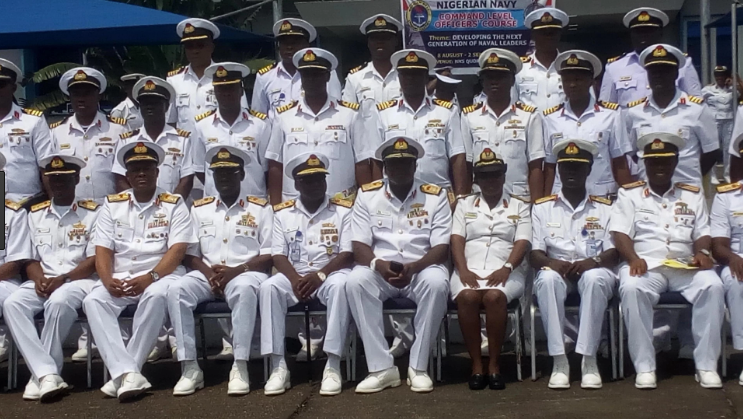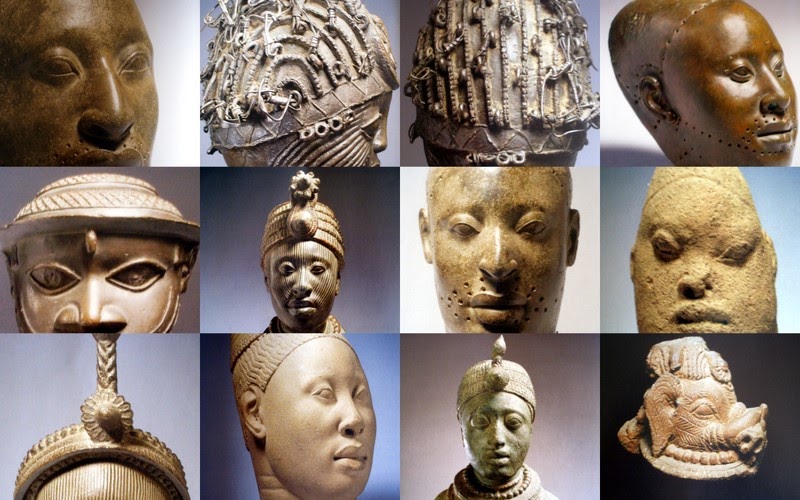The Nigerian Navy (NN) is a branch of the Nigerian armed forces. The Nigerian Navy is among the the largest Navies on the African continent, consisting of several thousand personnel, including those of the Coast Guard. The 1999 constitution of the Federal Republic of Nigeria and the Armed Forces Act CAP A20 accordingly charged the Nigerian Navy with the defense of Nigeria by sea. Other roles include enforcing and assisting in coordinating the enforcement of all customs, immigration, bunking, fishery protection and pollution laws (coastguard duties), including enforcement of all national and international maritime laws ascribed to or acceded to by Nigeria. The Nigerian Navy is structured into a Naval Headquarters made up of the Office of the CNS and 8 staff branches each administered by a Branch Chief of flag rank. These branches are: Policy and Plans, Training and Operations, Naval Engineering, Logistics, Account & Budget, Naval Safety and Standards, Administration and Office of the Navy Secretary.

History of Nigerian Navy
The Nigerian Navy owes its origin to the Nigerian Marine. Formed in 1914 after the amalgamation of the then Northern and Southern Nigerian. The Nigerian Marine (as it became known after 1914) was a quasi-military organization. This force expanded to become the Southern Nigerian Marine in 1893. A Northern Nigeria equivalent was formed in 1900. The two Marines were merged in 1914,. The responsibilities of the Marine included administration of the ports and harbors, dredging of channels, and lighting. It also operated ferry services, touring launches, and other small craft that plied the various creeks and other inland waterways. The first of these new organizations was the Nigerian Ports Authority, which was charged with the running of ports and ensuring safe navigation. The second organisation was the Inland Waterways Department, which took over the running of ferries and touring launches. The third organisation was the Nigerian Naval Force, made up mostly of reserve Royal Navy officers and ex-service personnel who had been transferred to the Nigerian Ports Authority from the defunct Nigerian Marine. Its primary responsibility was to train the personnel and set up the appropriate infrastructure necessary for the planned Navy. The first basic training establishment for the future Navy – the HMNS QUORRA – was started on 1 November 1957 with 60 junior ratings, who underwent a 6-month basic seamanship course.
In July 1959, the Nigerian Naval Force was transformed into a full-fledged Navy when Queen Elizabeth granted permission for the Force to use the title ‘Royal Nigerian Navy’. The title was changed to the ‘Nigerian Navy’ in 1963 after Nigeria became a republic. The constitutional task of the Navy was expanded in 1964 after the repeal of the 1958 Ordinance. The new law, known as the Navy Act of 1964, for the first time tasked the Navy with the “Naval Defense of Nigeria.” Other tasks assigned the Navy by the 1964 Act were essentially coast guard duties, namely: assisting in enforcement of Customs laws, making hydro graphic surveys, and training officers and men in naval duties. These tasks were essentially routine functions of any Navy. Consequently, the naval leadership began to mount pressure on the political leadership to re-define the constitutional role of the Navy. In 1993, this pressure yielded the desired result and under a new law, Armed Forces Decree 105 (now known as the Armed Forces Act), was incorporated as part of the 1999 Constitution. The Navy was given expanded military and constabulary roles, especially in the oil and gas sectors of the Nigerian maritime economy.
Vision of Nigerian Navy
To develop a credible naval power in fulfillment of the Nigerian Navy’s constitutional roles.
Motto
The Nigerian Navy have their motto as ” Onward Together ”
Mission of the Nigerian Navy
To deploy a naval force that is well trained, organised and highly motivated to discharge its.
Nigerian Navy basic requirements and Procedures for Application
Requirements
- Applicants should be a Nigerian by birth
- All candidates and applicants should be between the ages of 18 – 22 years old, at the time of entry into the Training School to receive the certificate. Whereas the age of 24 years, is acceptable for those who have higher qualifications, for example, I.C.T Professionals, Nurses, N.C.E Holders, etc.
- One of the main criteria is that candidates should not be married or have children before joining Nigerian Navy. Also, they should be of Nigerian origin by birth
- Candidates should print out the Parent or the Guardian Consent Form and the Local Government Attestation Form.
- Must meet up with physical, mental,& psychological training to ascertain your fitness.
- Applicants must pass the medical test.
- Candidates should be free from any previous condemnation by the court of law on criminal accusations.
Procedures
- Log onto the website( joinnigeriannavy.com ) to know the amount and the banks from which you can purchase the application voucher.
- Enter user name for card serial number
- Enter password for card pin
- Fill the form you see after logging in. Be as sincere as you can be. Then submit the form.
- Print out the registered form
- A notification of the exam date and recruitment center would be sent to you
- On the exam day, go to the recruitment center with.
- Birth Certificate
- Parents consent form
- 4-5 recent passport
- Local Government Identification
- Educational Certificates
Applicants with any of the following troubles cannot apply: –
Previous orthopedic operation
Short sight
Ear problem
Flat foot
Fracture
Stammering
Less than required height( 1.70 for male and 1.67 for female)
Any natural disability.
Nigerian Navy Ranks Symbol and Insignia:

When you join the Nigerian Navy recruitment, you can either be a non-commissioned officer or a commissioned officer. Non-commissioned officers are members of the Nigerian Navy who doesn’t need to have a higher or university degree to enlist. They are only involved in the coordination and physical aspect of military strategies. Commissioned officers are those whose entry requirements include a higher or university degree who are more involved in decision-making and leadership in the Nigeria Navy.
Non-commissioned Naval officer Ranks:
These are the non-commissioned officers’ ranks from the highest-ranking officer to the lowest;
- Warrant Chief Petty Officer
- Chief Petty Officer
- Petty Officer
- Leading Rating
- Able Rating
- Ordinary Rating
- Trainee.
Commissioned Navy officers are ranked as foolows;
- Admiral of the Fleet
- Admiral
- Vice-Admiral
- Commodore
- Captain
- Commander
- Lieutenant Commander
- Lieutenant
- Sub-Lieutenant
- Acting Sub-Lieutenant
- Mid-Shipman.
Nigerian Navy Salary Structure:
A Nigerian Naval officer salary is based on his/her rank. We gathered the salaries of the ranks which we could be able to get as there was n means to get the full salary payment scale of the navy.
The annual salary of high-ranking commissioned officers are as follows;
- Admiral – ₦16,303,140
- Rear-Admiral – ₦12,038,945
- Rear-Admiral – ₦12,038,945
- Commodore – ₦7,385,856
- Captain – ₦3,715,859
- Commander – ₦3,380,086.
The naval bases in Nigeria has grown in number over the years. They include the pioneer base at Apapa, which was developed in 1961 followed by the one in Calabar. In 1975, a base named NNS AKASO was opened in Borikiri, Port Harcourt. This was then followed by more bases in Warri, Sapele and Port Harcourt to give the Navy an idea about its present structure.








